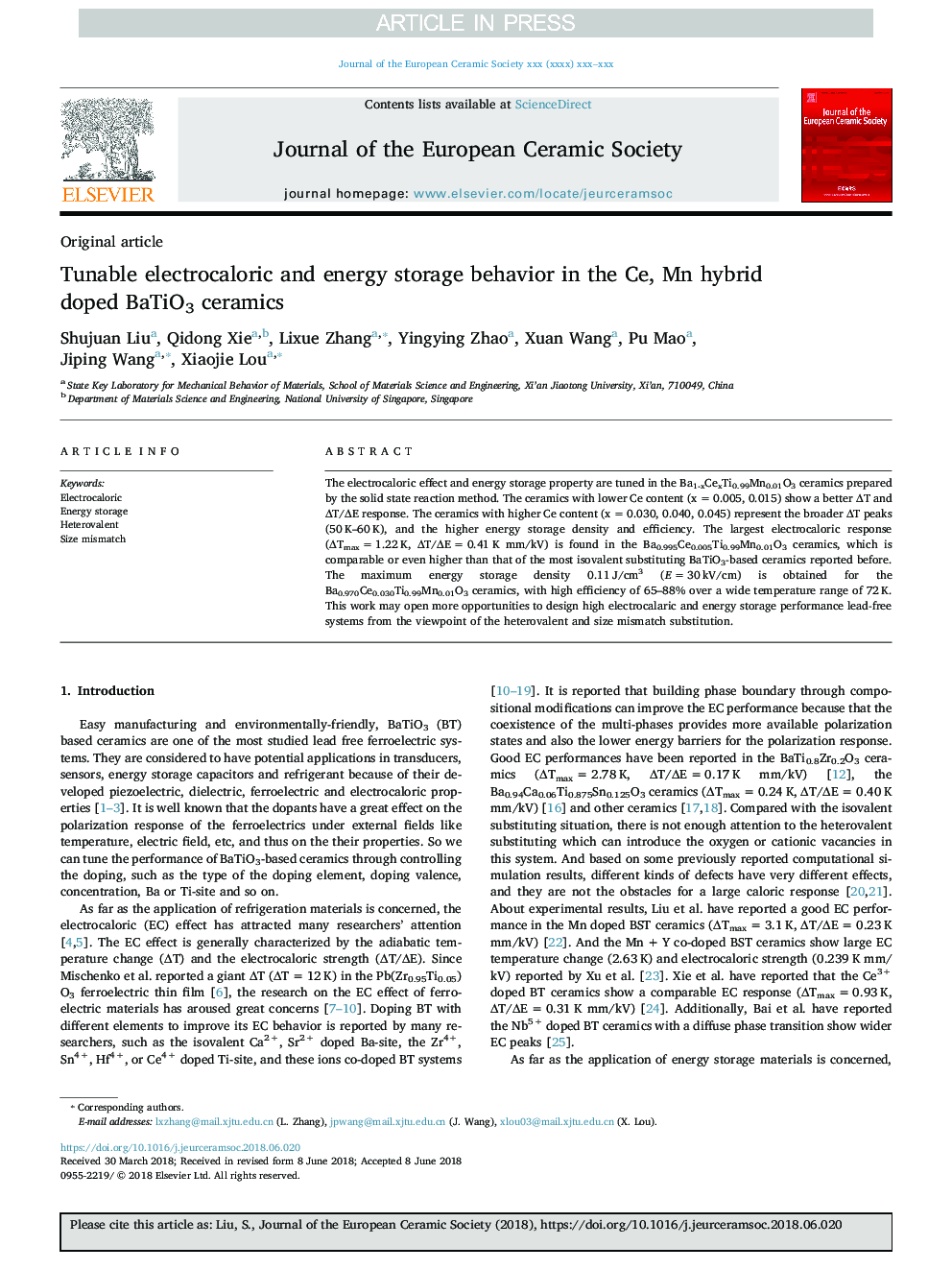| Article ID | Journal | Published Year | Pages | File Type |
|---|---|---|---|---|
| 7897741 | Journal of the European Ceramic Society | 2018 | 6 Pages |
Abstract
The electrocaloric effect and energy storage property are tuned in the Ba1-xCexTi0.99Mn0.01O3 ceramics prepared by the solid state reaction method. The ceramics with lower Ce content (xâ¯=â¯0.005, 0.015) show a better ÎT and ÎT/ÎE response. The ceramics with higher Ce content (xâ¯=â¯0.030, 0.040, 0.045) represent the broader ÎT peaks (50â¯K-60â¯K), and the higher energy storage density and efficiency. The largest electrocaloric response (ÎTmaxâ¯=â¯1.22â¯K, ÎT/ÎEâ¯=â¯0.41â¯K mm/kV) is found in the Ba0.995Ce0.005Ti0.99Mn0.01O3 ceramics, which is comparable or even higher than that of the most isovalent substituting BaTiO3-based ceramics reported before. The maximum energy storage density 0.11â¯J/cm3 (Eâ¯=â¯30â¯kV/cm) is obtained for the Ba0.970Ce0.030Ti0.99Mn0.01O3 ceramics, with high efficiency of 65-88% over a wide temperature range of 72â¯K. This work may open more opportunities to design high electrocalaric and energy storage performance lead-free systems from the viewpoint of the heterovalent and size mismatch substitution.
Related Topics
Physical Sciences and Engineering
Materials Science
Ceramics and Composites
Authors
Shujuan Liu, Qidong Xie, Lixue Zhang, Yingying Zhao, Xuan Wang, Pu Mao, Jiping Wang, Xiaojie Lou,
